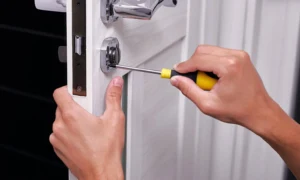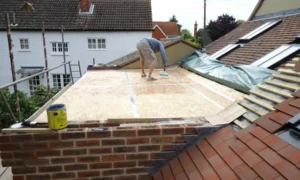Excessive moisture within a property, whether caused by leaking appliances, overflowing sinks or toilets, plumbing and sewage issues, or heavy rain and flooding, can pose a serious threat to its structural integrity. Such situations often trigger a cascade of unwanted and undesirable consequences. When water accumulates in places it shouldn’t, swift removal and immediate drying become imperative. The longer it lingers, the higher the likelihood of water damage and the subsequent growth of mould. Mould growth is a prevalent outcome of water damage within homes. Remarkably, mould can initiate its colonization on any moist surface within just 48 hours. Hence, taking prompt action is paramount. When left unattended, mould can rapidly proliferate on various surfaces, encompassing wood, ceilings, tiles, wallpaper, and even clothing. As time progresses, it can inflict severe harm upon walls, floors, and ceilings, potentially spreading its influence to other areas of the dwelling. Today, we will guide you through the steps to follow when encountering mould in your home and provide insight into the measures necessary to eliminate it effectively. Molds are microorganisms that thrive in environments with high humidity or excess moisture. They play a crucial role in the ecosystem by breaking down organic matter and contributing to the enrichment of soil for plant growth. However, their ability to decompose organic materials can pose problems, especially when they infiltrate your home. Recent estimates suggest that there are approximately 100,000 different species of mold present in our surroundings, including within our homes. While not all mold species are harmful, some release mycotoxins that can be detrimental to human health. If you or someone you know is sensitive to mold, you may experience symptoms such as: Coughing Respiratory congestion Eye irritation Sneezing Skin rashes Headaches Extended exposure to mycotoxins can lead to more severe health conditions, including cancer, pulmonary fibrosis, and neurotoxicity. It’s essential to be aware of mold-related issues and take measures to address them, particularly if you suspect mold growth in your living space. Mold growth is a common issue that can quickly take hold under the right conditions, with moisture being one of the primary triggers for mold spores to germinate and propagate. In cases where your home has recently endured significant water damage, it’s strongly advisable to seek professional guidance for water damage restoration. Why? Even if you’ve diligently cleaned and dried the affected areas, excess moisture might have infiltrated concealed spaces, setting the stage for future mold growth. Mold removal and remediation experts employ various tools, such as infrared cameras, moisture meters, and particle counters, to pinpoint the source of moisture. Once they’ve identified areas afflicted by mold infestations and determined the specific mold types present, they can offer recommendations for safe mold removal and preventive measures to mitigate the risk of recurrence. This professional assistance is vital for safeguarding your home from the persistent threat of mold. Promptly addressing even small patches of mold within your property is imperative. For areas smaller than one square meter, you can attempt mold removal using common household cleaning supplies like vinegar, chlorine bleach, baking soda, or borax. However, it’s crucial to prioritize safety when embarking on any DIY cleaning and mold removal endeavor. While household cleaners can be effective in the short term, it’s highly advisable to enlist the services of a professional mold remediation company. Improper mold cleaning and removal can lead to the removal of only visible mold, leaving the underlying source of mold growth untouched. In such cases, there is a high likelihood of mold regrowth or its spread to other parts of your property. Relying on professionals ensures comprehensive mold remediation and minimizes the risk of recurrence. The initial and crucial step in effectively eliminating mold from your home is to pinpoint its location and determine the underlying cause. Here are some key indicators to watch for when conducting a mold inspection within your residence: When you start noticing powdery or cotton-like patches emerging on your walls, floors, or ceilings, there’s a strong probability that you’re dealing with mold colonies. As time passes, this discoloration may intensify, potentially causing warping or deterioration of the affected surface. In the aftermath of flooding or water leaks, a prime breeding ground for mold is established. Even if you’ve diligently dried and cleaned the affected area, mold can persistently thrive beneath floors or hidden within walls. Attempting to dehydrate the area without appropriate tools often results in surface-level drying, leaving moisture trapped deep within materials like cement, wood, and similar substrates. Over time, this trapped moisture migrates back to the surface, creating ideal conditions for fungal spores to establish themselves and flourish. Thus, it’s imperative to address moisture intrusion comprehensively to thwart mold growth effectively. The presence of musty odors can serve as a compelling indicator of mold growth within your property. When these odors become discernible, it often suggests that mold is already proliferating at a rapid pace. People often liken these unpleasant odors to the scent of mushrooms, damp grass, decaying food, or wet dogs. In essence, if something smells off, it’s typically a clear warning sign that something is amiss, prompting further investigation. Dampness represents another prevalent factor contributing to mold growth and can potentially result in structural deterioration and rot. This issue frequently arises from condensation, a phenomenon that occurs when moisture-laden air encounters a cold surface, such as windows or mirrors. This occurrence often signifies a need for enhanced ventilation within your home. Moreover, dampness and subsequent mold growth can also be attributed to rising dampness. This occurs when groundwater infiltrates your residence due to the failure of the damp-proof course or when a house lacks proper damp-proofing measures during construction. Addressing dampness is pivotal in preventing mold proliferation and preserving the structural integrity of your property. Mold growth stemming from water damage has the potential to inflict substantial harm on your property. This damage may manifest in various forms, including ceilings collapsing, window frames deteriorating, floorboards weakening, and air conditioning systems becoming contaminated. Additionally, mold infestations can progressively consume your furniture, clothing, and other personal possessions, often resulting in substantial replacement costs. If you suspect the presence of mold within your home, it is prudent to enlist the services of a professional mold remediation company. At A1restoration, our team of seasoned mold removal specialists is at your service, and we offer a comprehensive initial inspection of your property, completely free of charge. Following the inspection, we will furnish you with detailed recommendations, including a transparent breakdown of our costs and a meticulously crafted step-by-step action plan. We take pride in employing cutting-edge tools and equipment, providing a one-day mould treatment process, and backing our services with a mold-free guarantee. These attributes collectively establish us as the foremost mold removal company in Australia, dedicated to safeguarding your property and well-being.Varieties of Mold Growth Induced by Water Damage
What Causes Mold Growth Inside Your Home?
Is Self-Treating Mold a Viable Option?
Identifying the Source of Mold Growth: A Step-By-Step Guide
Discoloration of Surfaces
Flooding or Moisture Intrusion
Strange Odors
Dampness: A Common Precursor to Mold Growth
When Should You Seek Professional Mold Removal Assistance?

TIMES OF RISING Latest Articles
Related Posts
On: October 22, 2024
Comments:
2
Shim Tape: Buying and Using Guide for Effective Gap Filling and Precision Adjustments
On: October 16, 2024
Comments:
1
Top 10 Educational Games for Kids in Dubai: Learning Games for Kids in Dubai
On: October 15, 2024
Comments:
2
Benefits of Digitizing Attendance With School Attendance Software: Transforming Classroom Management
On: August 6, 2024
Comments:
1
What Impact Does a PoS Device Have on Customer Loyalty in Lifestyle Stores?
On: June 4, 2024
Comments:
1








































